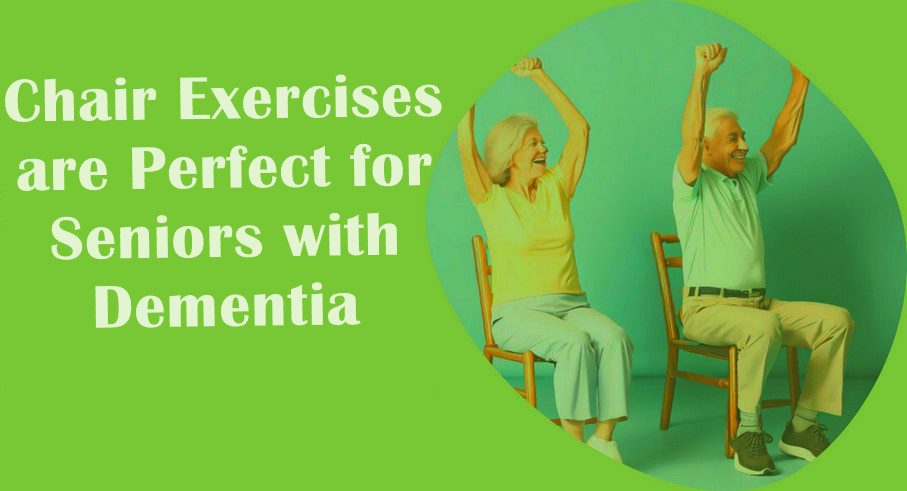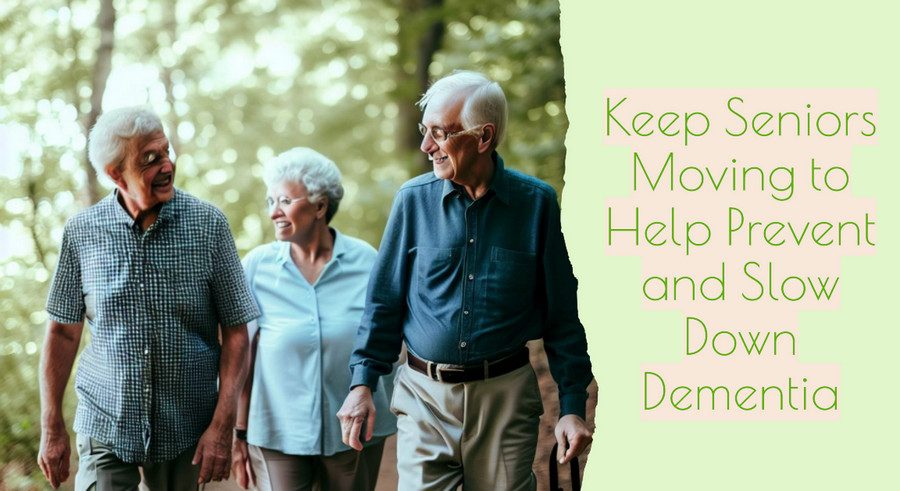


In this article, we will discuss how exercise fights Alzheimer’s and dementia in seniors.
Alzheimer’s disease and other forms of dementia currently affect over 55 million people worldwide. As the population ages, these numbers are expected to rise dramatically.
While there is no known cure yet for Alzheimer’s, exciting new research shows that regular exercise can significantly reduce one’s risk and help slow the progression of cognitive decline.

Aerobic activities like brisk walking, jogging, cycling, and swimming have been found to boost brain volume, increase blood flow, stimulate neuron growth, and even enlarge the hippocampus – the part of the brain responsible for memory.
In one recent study from the American Heart Association Journal, Circulation, researchers found that people who engaged in moderate-intensity cardio exercise for at least 150 minutes per week, and 75 minutes per week of vigorous aerobic exercise (or a combination of both), decreased the risk of death by any cause by up to 21%.
Another study published in Alzheimer’s & Dementia revealed that consistent moderate-intensity exercise over 6 months led to notable improvements in memory and thinking skills for older adults at risk for Alzheimer’s.
Functional MRI scans also showed increased connectivity in the brain’s memory networks.
The reasons behind the brain-enhancing effects of aerobic activity are complex but likely involve increased blood flow, neurogenesis, and neural connectivity.
By pumping the heart faster, more oxygenated blood reaches the brain, nourishing and stimulating neurons.
Starting a regular cardio routine is one of the most impactful ways to boost brain health. Even light walking for 30-60 minutes several times per week can make a significant difference long-term.

As we age, maintaining physical balance and stability becomes more challenging. This makes seniors much more susceptible to dangerous and debilitating falls.
For those with Alzheimer’s disease or dementia, problems with gait, posture, and balance are particularly common due to shrinking brain tissue in areas that govern coordination.
This significantly raises fall risks and the likelihood of injury.
Research shows that regular balance exercises like yoga, tai chi, and other activities that strengthen core muscles improve stability, reaction times, and mobility.
One recent meta-analysis of 15 studies on balance training found participants had a whopping 61% lower fall risk compared to non-exercisers.
Even those with Parkinson’s disease and dementia saw benefits.
Beyond fall prevention, balance activities have also enhanced cognitive abilities like attention, processing speed, and memory.
Challenging one’s physical equilibrium forces increased neural connectivity between the cerebellum, cortex, and basal ganglia.
Simple at-home balance exercises like standing on one foot, walking heel-to-toe in a straight line, or sitting and standing without using hands are easy ways to start reaping these brain-boosting rewards.

While most studies on exercise and dementia focus on aerobic and balance activities, a growing body of research highlights that resistance training offers major cognitive perks, too.
Lifting weights, using resistance bands, or performing targeted movements against gravity leads to several beneficial brain effects:
A 2016 study at the Faculty Guairaca in Guarapuava, Brazil studied over 37 elderly and sedentary women over 12 weeks.
Researchers found that engaging in resistance training three times a week led to markedly lower rates of cognitive impairment and dementia later on.
Starting strength training at any age can deliver fantastic mind and body benefits. Even basic moves like bicep curls, squats, and calf raises done several times a week can make a difference.

Many researchers believe the #1 lifestyle factor that impacts Alzheimer’s risk is consistent aerobic exercise. Moving one’s body regularly delivers a multifaceted neurological boost:
According to the Alzheimer’s Research & Prevention Foundation, regular physical exercise can reduce one’s risk of dementia by up to 50 percent.
Even if Alzheimer’s develops, consistent physical activity helps delay symptom onset and slow cognitive decline.
Aerobic exercise provides the aging brain with an unparalleled stimulus that fights neurodegeneration, fortifies cognitive reserve, and provides hope in the ongoing battle against Alzheimer’s.

Along with memory problems and confusion, those with Alzheimer’s often suffer from issues like:
Research demonstrates that regular exercise can help alleviate these Alzheimer ‘s-related symptoms as well.
Promoting restful sleep – Aerobic activity helps regulate circadian rhythms and leads to deeper, more restorative sleep.
Reducing depression – Exercise naturally boosts mood and eases depressive feelings by altering brain chemistry.
Minimizing restlessness – Staying active during the day results in less agitation and wandering at night.
A 2010 study in the Journal of the American Geriatrics Society found Alzheimer’s patients who engaged in daily exercise for 30-60 minutes showed marked improvements in mood, sleep quality, and behavior compared to sedentary individuals.
Caregivers of dementia patients should encourage regular movement throughout the day to help relieve problematic behavioral issues and improve quality of life. Even simple stretching or walking helps.

Research clearly shows physical activity reduces Alzheimer’s risk and aids those already diagnosed. But how much exercise do you need to reap the brain health benefits?
Most experts recommend aiming for 150 minutes per week of moderate exercise. This equals 30 minutes of activity 5 days a week. Mixing up different types of exercise leads to maximum gains. Here are some tips to start:
Starting and sticking to an exercise plan can be challenging. Still, the Alzheimer ‘s-fighting benefits make it well worth the effort. Recruiting a friend or family member to join you can help with motivation and accountability

After an Alzheimer’s or dementia diagnosis, continuing physical activity provides invaluable benefits that help slow the progression of symptoms. The key is choosing activities that match a person’s unique needs and abilities.
Here are some of the top exercise recommendations for those with moderate to advanced dementia:
The key is choosing activities the person enjoys and modifying intensity to match their current abilities. Even minimal movement provides benefits.
Support from caregivers and family makes adhering to an exercise routine much more manageable.

Maximizing the protective effects of exercise against dementia does not require intensive training or joining a gym.
Simple physical activities done daily deliver enormous benefits for both body and mind.
Here are easy ways to stay active:
Staying physically and mentally sharp requires moving a daily habit, regardless of age, mobility, or dementia diagnosis. Creatively fitting more activity into your routine delivers huge cognitive and physical rewards.

The scientific evidence is clear how exercise fights Alzheimer’s and dementia. Regular exercise provides incredible benefits for Alzheimer’s prevention and helps manage symptoms.
Aerobic, balance, and strength training activities build cognitive reserve, stimulate neuroplasticity, and significantly reduce dementia risk.
Aim for 30 minutes of moderate exercise at least 5 days per week for optimal results. Building physical activity into your weekly routine provides hope in the ongoing fight against Alzheimer’s and other dementia.
Learn more about the exercise programs at Applewood Our House for our residents. Contact us today.